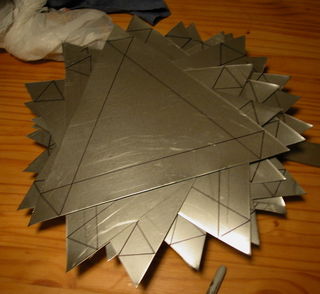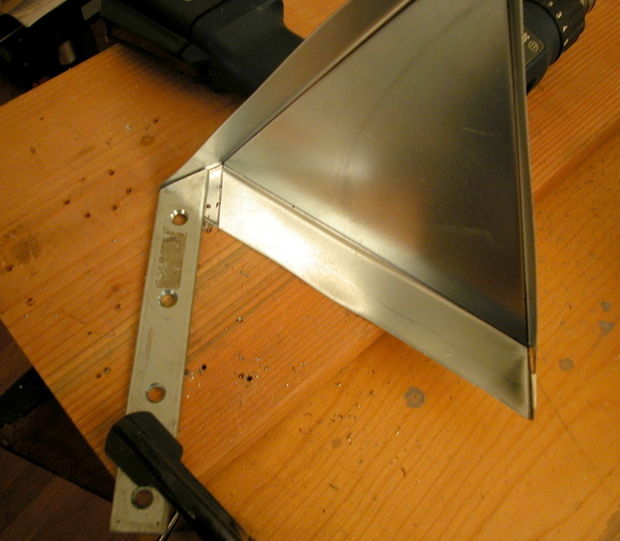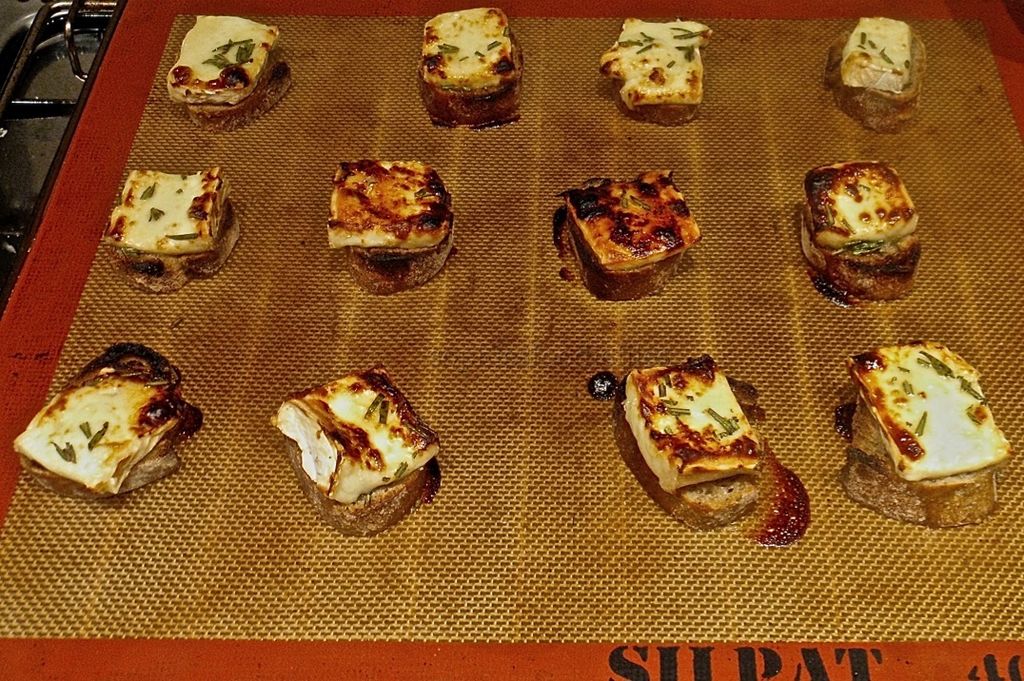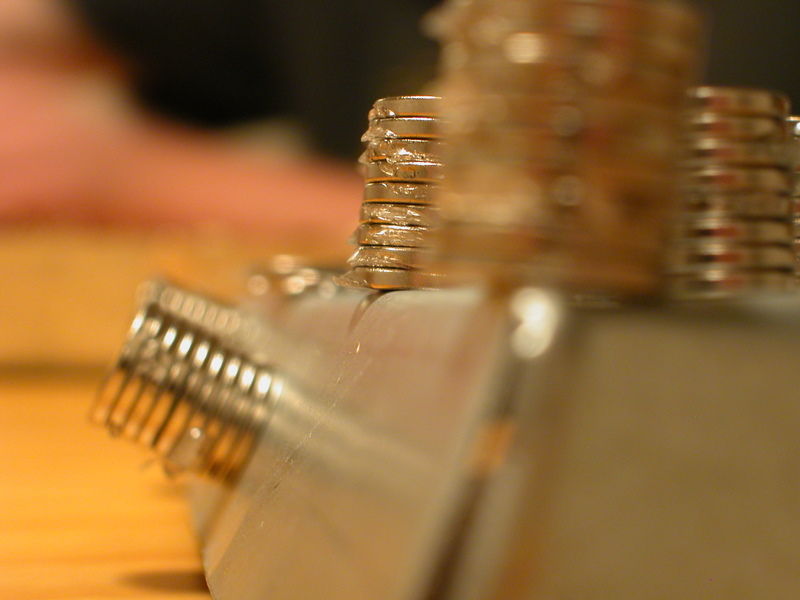Question ID: 3000-6262-0-1-2-5
Recipe Description
we needed 20 equilateral triangles. choosing an altitude of 12 inches let us easily lay out two strips of them on a 24x48 inch sheet of 24 gauge steel. in order to get the dihedral angle at which the sides of the pans have to meet to form the whole icosahedron requires the sides to be sloped at darn near 120 degrees so if one just cuts out the diamond shaped tab in each corner, the results fit together quite nicely.
we decided to pick up a power-shear from harbor freight. cuts the sheet like butter and leaves a cleaner edge than the hand sheers. it wouldn't work for really detailed work but for reasonably smooth curves it's definitely worth it's weight and even for straight cuts it's significantly more affordable than a floor shear.
folding the pans was greatly simplified by a 18inch bending brake. when you have to repeat some step 3*20 times, it's definitely worth setting up the appropriate jig. here a piece of metal to clamp down the pan was cut to give the appropriate clearance and later re-used as a hold down for drilling. we used a pop rivet in each corner to hold things a bit more rigid.
remember that sheet metal is sharp. wear gloves, but don't be afraid to have fun.
at this point, we thought it was time to glue the magnets on. we wanted to use 6 magnets (aquired from amazingmagnets.com) to join each edge. interestingly enough, if you attach all six magnets to one side of each edge, you end up having to make some pans where two edge are lined with magnets and some pans where only one edge has magnets, a direct consequence of the so called "hairy ball theorem". the lack of symmetry is unsatisfying to say the least but has an easy solution. rather than trying to orient each edge, orient the pan, split the magnets so there are 3x3 on every pan and offset the magnets counter clockwise.
it was time to bake a test pie. the doubters needed to know for sure that the pie would stand up to inversion. the answer was that, "yes it did". more importantly, the experiment showed was that the 350 deg F was plenty beyond the curie point and essentially voided our magnetic attachment scheme. it was now time to weep while we "un-epoxied" 180 magnets.
gathering ingredients to make 20x pecan pies is still exciting, even after all these years. we used the recipe on the back of the karo bottle and added 1.5 tablespoons of flour to help guarantee the pies weren't overly runny.
the modular construction of the pie-cosahedron was a godsend in terms of cooking preparations. we pipelined 4 sub-pies per shelf in the oven, hit em with 75 minutes of baking at 350F and cooled on the counter-top while the next 4 went in.
remember to line the bottom of the oven with foil. things are likely to run over and the sugar burns on hard.
once the pies were cool, we re-attached the magnets. it is a little hard to describe accurately the sensation of wrestling with magnets that are incredibly small, incredibly powerful and covered with some combination of pie filling and rapidly hardening epoxy. let's just say i wouldn't spend the night before thanksgiving any other way.
we wrapped each sub-pie-assembly in saran wrap to make it easier to transport and put together. the saran wrap was cut off once the pies were in place and ready to be served. there was surprisingly little slump; the layer of pecans and crystallized sugar did well to hold in the gooey interior. on whole the pie consistency was judged to be far better than that of the fractal pie, probably due to the deeper pans and more controlled cooking process.
Question & Answer
Question: Select the incoherent image in the following sequence of images.
Choices:
 |
 |
 |
 |
|---|---|---|---|
| (A) | (B) | (C) | (D) |
 |
|---|
 |